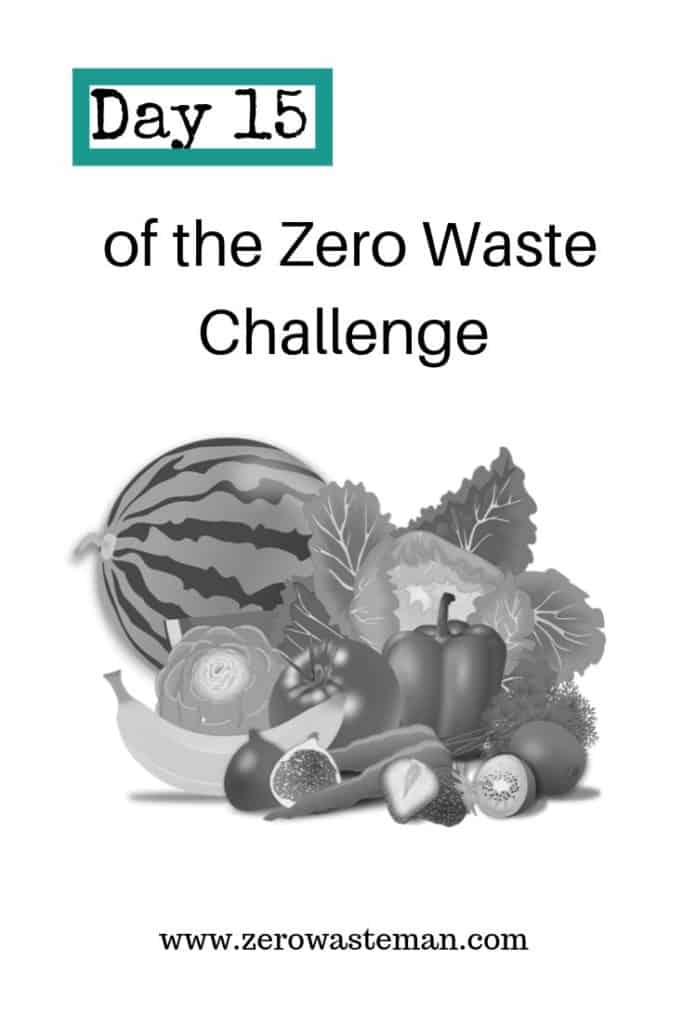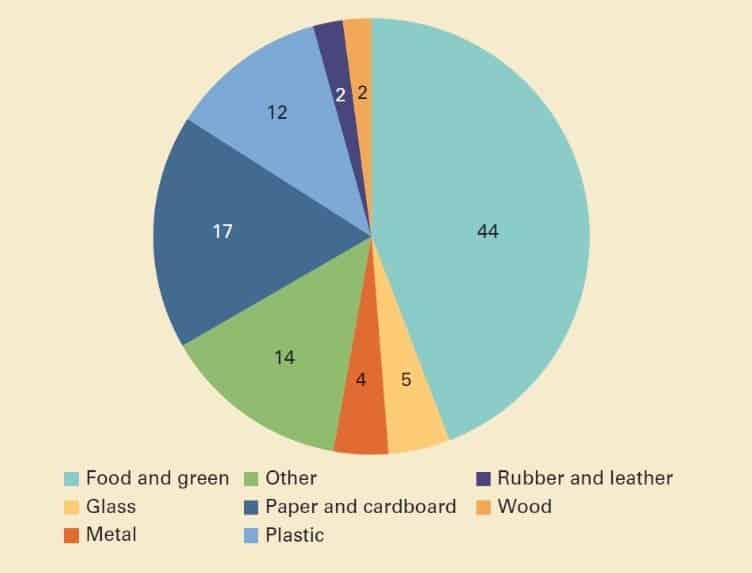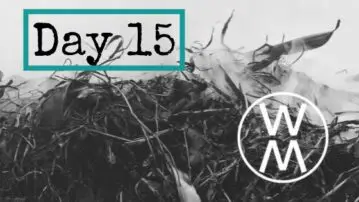
Day 15 of the zero waste challenge is all about how to start composting, or if you already compost, start composting 2.0. ?
Composting is one easy way to do your bit and help the environment. It is the most natural way to reduce your waste and turn it into something that becomes valuable again. Your plants will love you for it.
Why should I start a compost?
A significant percentage of ~ 43% is actually organic material that is just being sent to the landfill. I found numbers as high as 50% and even higher in Europe, Central Asia, and North America. ~ source

Organic material means packaging, like egg cartons, food scraps, paper, and cardboard, make up this percentage.
related: How To Recycle Paper The Right Way?
The issue here is that if you throw your organic material in the green bin, the chances are that it will go to a landfill.
A landfill operates anaerobic, meaning there is no oxygen added to yours and my waste. Rubbish goes in the big hole, and the soil gets put on top, and so on. When organic material decomposes in a landfill, it creates methane, 30 % stronger than CO2.
Related: What is zero waste?
Very few MRF’s have a system to turn this methane gas into energy. In most places, it just goes up into the atmosphere, where it adds to the global warming problem.
If you want to do your part in helping the environment but don’t know where to start, get yourself a compost going.
This is going to be the zero waste challenge for today.
But how to start composting, and what can I throw into my new composting bin?
What to compost?
- Fruits and vegetables
- Eggshells
- Coffee grounds and filters
- Teabags/careful as most of them use plastic to seal them shut.
- Nutshells
- Shredded newspaper (nonglossy)
- Cardboard
- Paper(nothing with a lot of ink)
- Yard trimmings
- Grass clippings
- Houseplants
- Hay and straw
- Leaves
- Sawdust
- Wood chips
- Cotton and Wool Rugs
- Hair and fur
- Fireplace ashes
What not to compost?
- Coal or charcoal ash
– only in moderation - Dairy products (e.g., butter, milk, sour cream, yogurt) and eggs
– Create odor problems and attract pests such as rodents and flies - Diseased or insect-ridden plants
– Diseases or insects might survive and be transferred back to other plants - Fats, grease, lard, or oils
– smells and attracts animals of all sorts - Meat or fish bones and scraps
– smells awful and attracts more rodents - Pet wastes (e.g., dog or cat feces, soiled cat litter)
– Might contain parasites, bacteria, germs, pathogens, and viruses harmful to humans - Yard trimmings treated with chemical pesticides
– Might kill beneficial composting organisms
Ok, so now that we have covered what you can and can’t throw into your compost, let’s see how you can start a compost.
There are three different types of composting bins that I think are the most efficient ones. Find out about the setups in The Ultimate short guide to composting.
How to start composting?
If you have a garden, then this is a straightforward thing to do. All you need is a big enough bin, preferably without a floor and some food scraps and garden waste. Throw it all in there together and wait half a year.
If you don’t have a garden, you can opt-in for a little home composting device, like the bokashi method, or a worm farm, which you can set up on a balcony, for example.
The most important thing to consider is that you don’t throw any bones or dairy products into your compost. Be careful with too much fat and oil as well. And you know those tiny stickers on the fruit. Damn, how they piss me off.
Those are made from plastic. Additionally, they use a type of ink that you don’t want to mix in with your compost. So be sure to peel them off before you throw your banana peel into the compost. Oh, and be aware of citrus. If you eat a lot of it, be careful not to overfill it with citrus as the acidity can harm the worms and the PH in the soil.
That’s it. Does it sound like a big task? Feels a bit too much?
If you think it does, download my free Composting sheet and stick it on your bin, so you know what can and what can’t go in.
To sum it up:
- Less waste into Landfill
- Reduces methane gas into the atmosphere and lowers your carbon footprint
- More nutritions back into nature
- Reduces the need for chemical fertilizers
- Encourages the production of beneficial bacteria and fungi
This should get you going on your zero waste challenge and a compost bin. Have you been composting for a while? Click the button below to get your composting to the next level.


